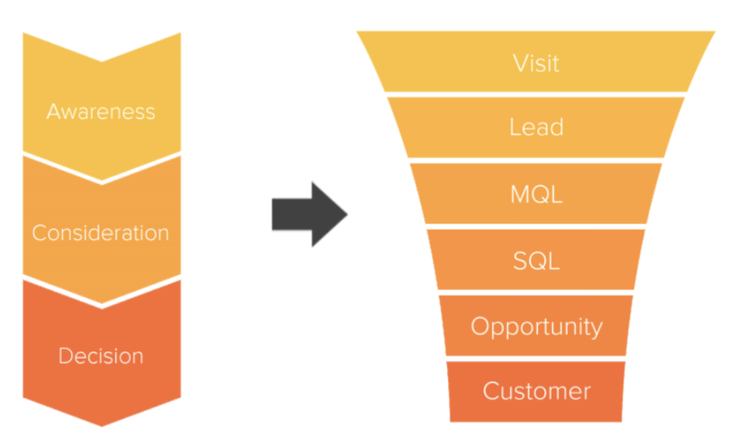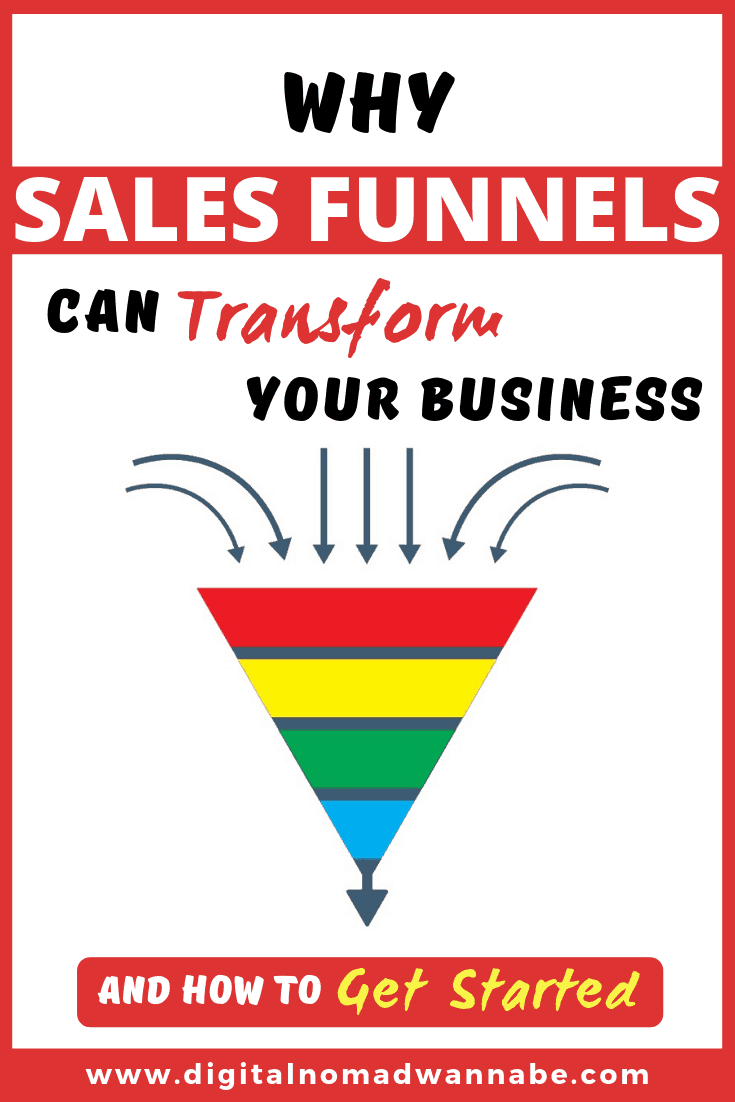Apr 22, 2019 Well, this common phrase applies when managing your sales funnel, too. Providing your sales and marketing team with the proper tools is a key element for aligning your team’s efforts. Here are a few great tools to help manage your sales funnel. Customer Relationship Management System. A good CRM is the most important tool to manage every. Mar 01, 2019 An effective sales funnel is essential if you have a business that wants to make actual profits rather than one-off sales. Other companies are already focusing on this important aspect of marketing and sales. Learn all about what sales funnels are and why your business needs them! Click To Tweet Who needs a sales funnel. Seriously, everyone. But in all seriousness, everyone who is selling a product or a service needs a proper sales funnel strategy. Jul 30, 2020 The sales funnel is the visual representation of how you generate leads and nurture prospects through the sales process. Literally picture a funnel. The widest part at the top is your attempt to capture any leads possible no matter how broad. But as you move down and it narrows, you scale back your prospects that fit your ideal customer.
Do you know your sales funnel metrics? This is important for you and your business if you want to achieve business growth.
You know that sales funnel is one of the most important business elements that can increase your overall business potential energy. Previously, I have written two posts about sales funnel. The first is an explanation about the sales funnel. The second is about sales funnel improvements.
Jan 16, 2020 A sales funnel is the path a customer takes to purchase from your business, all the way from interested prospect to converted customer. Every business has a sales funnel because every business (presumably) is trying to turn visitors into leads and leads into paying customers.
This post is a third post related to the most important sales funnel metrics with which you can easily implement improvements in your sales process. If you want to learn more about what to include, read about how Amazon use their sales process.
If you know the numbers you will know the metrics and elements that must be improved to increase the business potential energy of your sales process and overall business. Furthermore, these metrics are the basis to know the right amount of business potential energy you have stored in the selling process as one of the business elements with potential energy.
Let’s see what are the most important sales funnel metrics.
Sales Funnel Metrics #1: Entry Point or Amount of Entrance
This is the number of leads or potential customers that enter into your sales funnel in a certain period of time. Simply, these sales funnel metrics is expressed in terms of numbers. Furthermore, the entrance can be expressed in terms of forecast numbers if you make projections of your sales funnel.

Why It's Important To Understand Your Sales Funnel Analysis
Measure Where Your Sales Funnel Start?
If you want to find the real numbers, you must previously define the borders of your sales funnel. This means that you need to know when your sales funnel starts. These borders can be customer’s comings in your sales store, or leads that contact your sales department, or leads that is contacted from your sales department, or potential customers who visit your website, or subscribe to your newsletter, and so on.
But, this is a not a simple job because the start of the sales funnels can be defined from different business efforts previously mentioned. If you want to know the real numbers at entry points of your sales funnel, you must define all your business efforts that bring leads into the sales funnel. When you know this, you can start to measure over a period of time the real numbers.
For example, you want to find sales funnel metrics about entrances in one month period of time. Then you can make only simple math with collecting numbers from different efforts that bring potential customers inside your funnel. In the table below is given this simple math:
| Business Effort | Number of Entrance |
| Contacts made from a sales department | 1000 |
| Leads that were contacted by your sales department | 2000 |
| Newsletter subscribers | 1000 |
| Total Entrance | 4000 |
Sales Funnel Metrics #2: Conversion Rates
I want to differentiate two types of the conversion rates in your sales funnel:
- Overall conversion rate
- In-process conversion rates
Overall Conversion Rate
The overall conversion rate is the ratio of the potential customers that your sales funnel transform into the buyers at the end of the sales funnel and potential customers that become part of the funnel. This metric is expressed by percents of entrances.

For example, 50% overall conversion rate means that 50% of the people that become part of your sales funnel have bought something from your business. The overall conversion rate depends on the next type of conversion rates.

In-process Conversion Rates
Your sales funnel have different elements. These elements can be awareness, interest, desire, and buying. For example, when the sales team contact potential customer, only part of them will be aware of your products or services. That is the first in-process conversion rate.
After that, the small part of potential customers with awareness will have an interest in your products and services. That is the second in-process conversion rate.
Next, the small part of the leads with interest will have a desire to buy something and this is the third in-process conversion rate. And at the end, the part of potential customers with desire will buy something. In this sales funnel with such elements, we can have 4 different in-process conversion rates:

- The conversion rate that converts entrants into the leads that are aware of your business, products, and services (CA).
- The conversion rate that converts leads with awareness into the leads with interest (CI).
- The conversion rate that converts the leads with interest into leads with desire (CD).
- The conversion rate that converts the leads with desire into buyers (CB).
How to Calculate Overall Conversion Rate?
With these four in-process conversion rates, you can calculate your overall conversion rate (C). You can make the calculation with simple multiplying all in-process conversion rates:
In the table below is an example:
| Entrance | Become Aware | Have Interest | Have Desire | Buying |
| 4000 | 1000 | 500 | 350 | 280 |
| (CA) = 25% | (CI) = 50% | (CD) = 70% | (CB) = 80% |
So, the overall conversion rate will be:
If you know the real entrance number and in-process conversion rates you will find overall conversion rates of your sales funnel. Furthermore, you can play with numbers to find the ways for possible improvements to your overall sales process.
Second Way to Calculate Sales Funnel Overall Conversion Rate
There is another way to calculate the overall conversion rate that you can use when you know the number of buyers at the end of the funnel. For example, if you have 4000 entrances and at the end of the funnel 280 of them buy something from you, then the (C) will be:
The process of finding in-process conversion rates is more difficult than to capture customers at the end of the funnel to divide with the number of entrances. However, you can also use the (CB) to find the in-process conversion rates. My recommendation is to know the in-process conversion rates. It is important because they will show you the possible areas for improvement of the sales funnel.
Sales Funnel Metrics #3: Average Sale
Average sale is the value expressed in currency generated at the end of your sales funnel. This measure is average dollars spend from one customer.
This is an important metric in each sale funnel. With this metric, you can see the value of your sales funnel. On the other side, this value will give you ideas for improvement of your sales process.
For example, if you find that this number is too small you can do a market research. Next, you can find the target market that will spend more money at the end of the funnel.
You can calculate this metric when you divide overall income for the specific period of time with the number of customers your sales funnel has generated. For example, if you generate $28,000.00 from 280 buyers, then the average sale will be $100 from one buyer.
Sales Funnel Metrics #4: The Duration of the Sales Funnel Process
This is the last sales funnel metric important in your sales process. Duration of the sales process is the time that is spent by one potential customer to become a buyer. This is an important metric that measures the quality of your sales funnel. If this time is very long than the quality is at the lower level. You can find these metrics if you measure the time when the potential customer come into your sales funnel. Next, you need to subtract this time from the time when that customer makes a decision to buy something.
Why It's Important To Understand Your Sales Funnel Event
Here I also recommend finding the single duration of every element of the sales funnel. If you know what is the sales funnel duration time for potential customers to pass all in-process elements, you will find the elements you need to improve.
